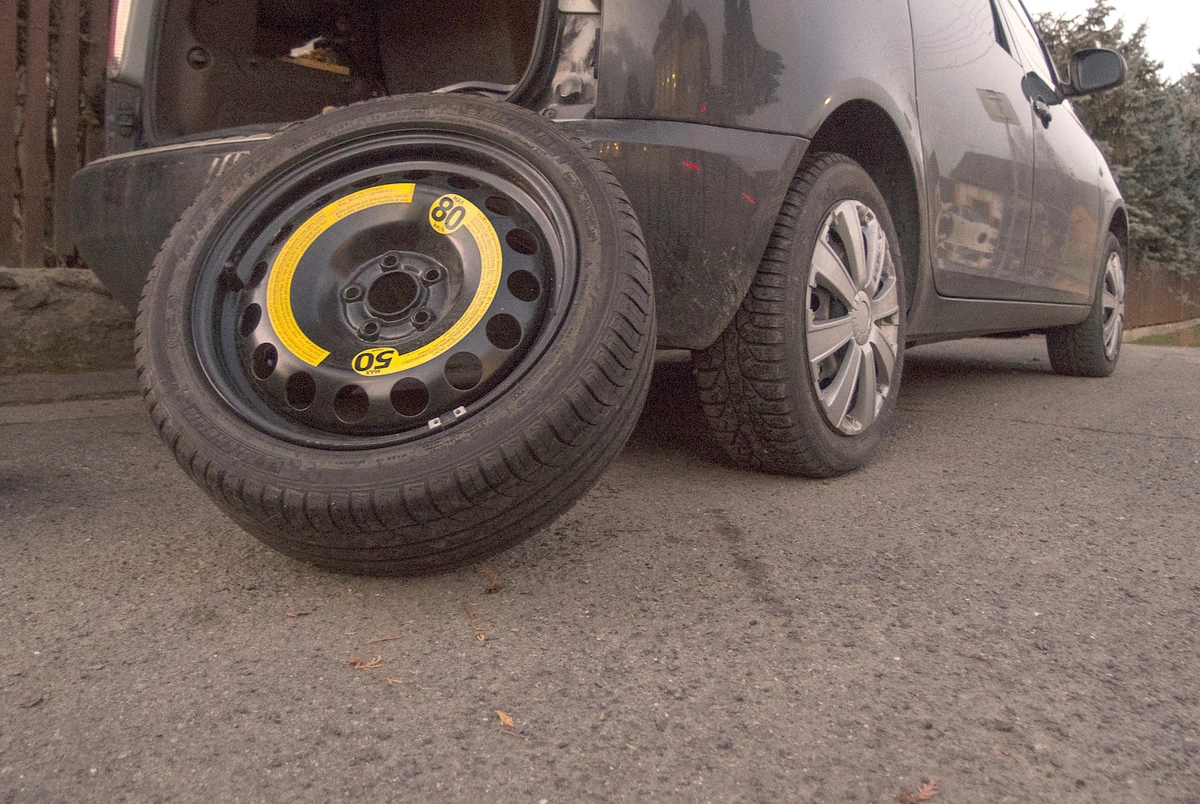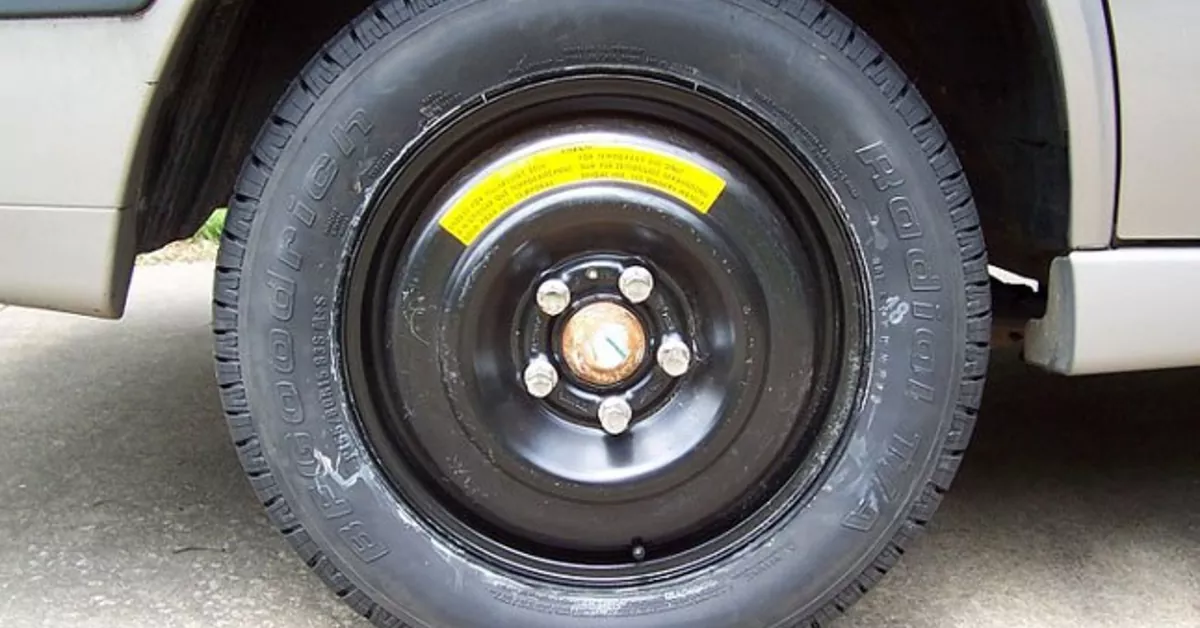


Flat tires are an inevitable part of driving, leaving you stranded until you can replace or repair the damaged tire. Fortunately, most vehicles come equipped with a spare tire, commonly known as a "donut," designed for temporary use until you can reach a tire shop. However, driving on a donut tire for an extended period or at high speeds can be risky and potentially cause further damage to your vehicle. This comprehensive guide will explore the intricacies of donut tires, their limitations, and best practices for safe driving when using one.

A donut, or spare tire, is a compact, lightweight tire designed for emergency use when one of your regular tires becomes flat or damaged. Unlike standard tires, donut tires are smaller in size and have a shallower tread depth, making them unsuitable for long-term use.
| Type of Spare Tire | Description |
|---|---|
| Compact/Donut Spare | Significantly smaller than regular tires, designed for temporary, low-speed use only. |
| Full-Size Spare | Identical in size and specifications to regular tires, more versatile but still temporary. |
Donut tires are designed for emergency use only and have strict limitations on the distance and speed at which they can be driven. Most manufacturers recommend a maximum distance of 50-70 miles at speeds up to 50 mph when using a donut tire.
Exceeding these limits can lead to various risks, including tire failure, loss of control, and potential damage to your vehicle's transmission, suspension, and other components. It's crucial to consult your vehicle's owner's manual for specific recommendations and limitations.
Driving extended distances or at high speeds on a donut tire can have severe consequences:
Tire Failure/Blowout: Donut tires can overheat or experience rapid wear, leading to a blowout.
Loss of Control/Handling Issues: The smaller size and different tread pattern can negatively impact handling, steering, and braking.
Transmission Damage: Extended use can put additional strain on the transmission and drivetrain components.
Suspension Damage: The weight imbalance can lead to premature wear or damage to the suspension system.
Increased Accident Risk: Reduced traction, stability, and braking performance heighten the chances of losing control.
To avoid these risks, treat a donut tire as a temporary solution and replace it with a new, full-size tire as soon as possible.
Some vehicles come equipped with run-flat tires, designed to be driven on for a limited distance after a puncture or air loss. While convenient, run-flat tires also have limitations:
| Run-Flat Tire Limitations | |
|---|---|
| Maximum Distance | Typically 50 miles after air loss |
| Maximum Speed | Up to 50 mph after air loss |
| Replacement Required | Must be replaced after driving while flat |
| Cost | More expensive than standard tires |
While run-flat tires provide added mobility, they are not intended for long-term use after a puncture or air loss incident, similar to donut tires.
If you must drive on a donut spare, it's essential to take the following precautions:
Avoid highways if possible, stick to lower-speed local roads and streets.
Maintain low speeds, do not exceed 50 mph.
Allow extra braking distance due to reduced traction and braking performance.
Avoid aggressive driving, such as sudden acceleration, hard braking, or sharp turns.
Check tire pressure and ensure the donut tire is properly inflated to the recommended PSI before driving.
Inspect the tire regularly during your journey for signs of damage, excessive wear, or overheating.
Remember, a donut tire is only a temporary solution until you can have the flat repaired or replaced with a new, full-size tire.

It's essential to replace the donut spare tire with a new, full-size tire as soon as possible, ideally immediately after reaching your destination. Continuing to drive on a donut increases the risks and potential for damage to your vehicle.
Additionally, most spare tires have a limited lifespan and should be replaced every 6-10 years, even if they appear undamaged. The rubber compounds in tires degrade over time, compromising the tire's integrity and safety.
To ensure your spare tire is ready when you need it, follow these maintenance tips:
Check air pressure regularly, as spare tires can lose air pressure over time. Inflate to the recommended PSI before use.
Inspect for damage, such as cracks, bulges, or excessive wear that could lead to tire failure.
Rotate with regular tires if you have a full-size spare, to evenly distribute wear.
Replace aged spares every 6-10 years, regardless of tread depth, as recommended by most manufacturers.
By properly maintaining your spare tire, you can ensure it's ready to safely get you to a repair facility in case of an emergency flat.
Donut or compact spare tires are designed strictly for temporary, emergency use to allow you to slowly and carefully reach a tire shop or mechanic. Driving extended distances or at high speeds on a donut increases the risks of tire failure, vehicle damage, and loss of control, which can lead to dangerous situations on the road.
Always prioritize replacing the donut with a new, full-size tire as soon as possible. When driving on a spare, take extra precautions by reducing your speed, avoiding highways, and allowing plenty of braking distance. Treat the donut as the short-term solution it's meant to be, and you'll reach your destination safely without compromising your vehicle's integrity or putting yourself at risk.
A donut spare tire is a compact, lightweight tire designed for temporary emergency use only. A full-size spare tire is identical in size and specifications to the vehicle's regular tires, offering more versatility but still intended for temporary use.
No, you should not drive faster than 50 mph on a donut spare tire. Exceeding this speed limit can lead to tire failure, loss of control, and potential damage to your vehicle.
You should check the air pressure in your spare tire regularly, even when it's not in use. Spare tires can lose air pressure over time, so it's essential to inflate them to the recommended PSI before use.
No, donut spare tires are not designed for long-distance travel. Most manufacturers recommend a maximum distance of 50-70 miles when using a donut spare tire.
Driving too far on a donut spare tire can lead to tire failure, loss of control, and potential damage to your vehicle's transmission, suspension, and other components. It's crucial to replace the donut with a new, full-size tire as soon as possible.
Run-flat tires are designed to be driven on for a limited distance after a puncture or air loss, typically up to 50 miles at a maximum speed of 50 mph. Unlike donut spares, run-flat tires are more expensive and must be replaced after driving while flat.
No, even if you rotate a full-size spare tire with your regular tires, it is still intended for temporary use only. You should replace the spare with a new, full-size tire as soon as possible.
Most manufacturers recommend replacing spare tires every 6-10 years, regardless of tread depth, as the rubber compounds degrade over time, compromising the tire's integrity and safety.
No, it's not recommended to use a donut spare tire on the highway, even if you're driving slowly. Stick to lower-speed local roads and streets to minimize the risks associated with driving on a donut spare.
If you experience a flat tire and don't have a spare, you should pull over to a safe location, turn on your hazard lights, and call for roadside assistance or a tow truck. Driving on a flat tire can cause severe damage to your vehicle and compromise your safety.

Sarah isn't your average gearhead. With a double major in Mechanical Engineering and Automotive Technology, she dived straight into the world of car repair. After 15 years of turning wrenches at dealerships and independent shops, Sarah joined MICDOT to share her expertise and passion for making cars run like new. Her in-depth knowledge and knack for explaining complex issues in simple terms make her a valuable asset to our team.









